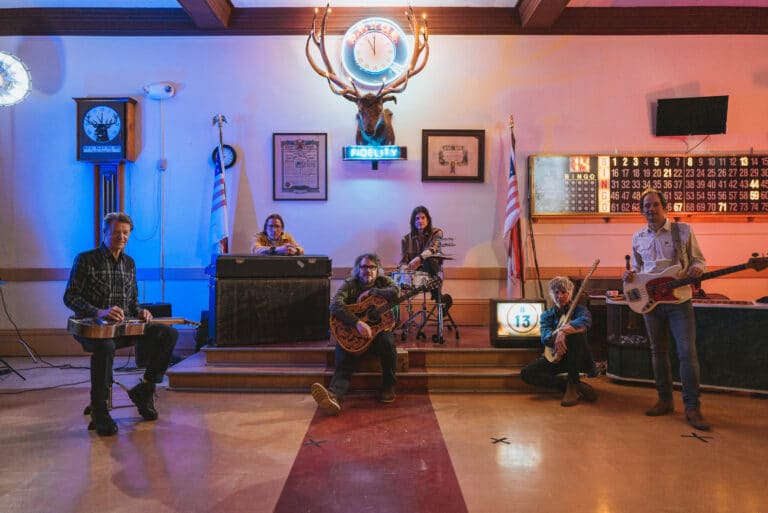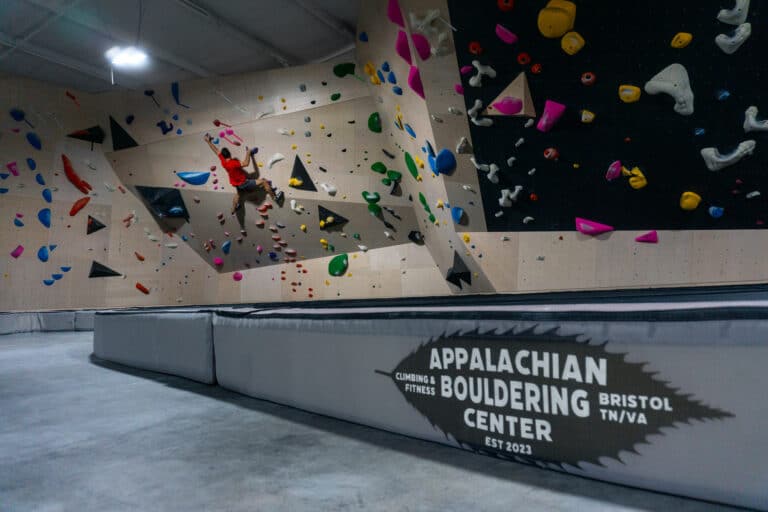“There’s nothing more tragic than going into the backcountry to do something epic and dying in the process. Knowledge is power”
—Lafroy Stevens

Lafroy Stevens’ journey to becoming a wilderness EMT began with a rattlesnake. It happened in 2017 on Hidden Rocks Trail in Dayton, Va. That summer, Stevens—who works as a public school teacher in Charlottesville—was overseeing a summer camp program for a local gym. As part of the program, she partnered with a guide service to take kids rock climbing.
On this particular occasion, the group was hiking to a popular crag when a nine-year-old boy needed to use the restroom. So, Stevens looked around and found a private spot. But before she sent the student into the woods alone, a little voice told her to scope it out.
“As soon as I stepped off the trail, I heard that distinctive rattle,” Stevens remembers. “About seven feet away, there was this beautiful timber rattler coiled up.”
That shook her.

“A warning bell went off,” says Stevens. “I just kept thinking, ‘What if he had gotten bitten? I have zero training.’”
Not long after, Stevens signed up for a wilderness first aid class with MEDIC SOLO, a wilderness medical school in Charlottesville. Today, she is a wilderness EMT and an instructor for the school.
From her training, Stevens has learned preparation is key for any outdoor adventure. Even casual day hikes can turn deadly if you get lost, twist your ankle, or become hypothermic.
“There’s nothing more tragic than going into the backcountry to do something epic and dying in the process,” she says. “Knowledge is power.”
With this in mind, we spoke with Stevens and other outdoor experts across the Southeast to learn more about how to stay safe in the woods. Here are the five outdoor survival skills they think every adventurer should master.

Skill 1: Basic First Aid
In 2017, when Stevens’ camper was almost struck by a rattlesnake, she had no clue what to do. Now, she knows addressing poisonous snake bites in the backcountry is pretty simple.
“Press around the wound to encourage some of the venom to come out,” she instructs. “Then, clean the outside of the wound, bandage it, and calmly walk to the front country.”
Once you have cellphone service, call 911 and get to the hospital. So long as you are healthy, you’ll recover just fine.
Other first aid skills like performing CPR, setting a splint, supporting a strain, and stopping bleeding are also invaluable. Understanding how to hydrate properly is another big one.
“There’s nothing like being dehydrated out in the middle of nowhere,” says Stevens. “Then, you slip and fall because you’re woozy.”
As a general rule, you should consume about one half-liter of water per hour of moderate activity in moderate temperatures. Of course, if it’s hot outside or you’re participating in a strenuous activity, you should increase your water intake. “And also eat salty snacks,” says Stevens.

Skill 2: Navigating (Without Your Phone)
One day, while working in the Canadian bush, wilderness first responder Trey Walker received an SOS on his satellite phone. A group had hiked in and couldn’t find their way back out.
“They were lost because they didn’t adequately mark their maps in a remote part of the Canadian crown lands where the trails are hard to find,” Walker explains. “Luckily, my coworker talked them through this over the phone.”
But had Walker and his team not been in the area, the group could have easily died from exposure. That experience is why Walker stresses the importance of navigational skills in his current role as assistant manager of SOLO Southeast, a wilderness medicine school that offers classes at the Nantahala Outdoor Center in Bryson City, N.C.
“Navigation is really first and foremost,” says Walker. “If we can prevent becoming lost and needing to use our wilderness survival skills in the first place, that is ideal.”
Stevens agrees, adding that adventurers should learn how to read a paper map rather than rely on their cell phones.
“Cell phones are great,” she says, “until they die.”

Skill 3: Building Shelter
In certain harsh conditions, the human body can only survive three hours without shelter. Walker learned this the hard way when he became hypothermic while canoeing during a summer rainstorm.
“Building a shelter is vital and should be among the first things you do in a survival situation,” he says. “We must protect our body from heat losses through the ground and air.”
For this reason, Stevens always recommends carrying a rainfly in your pack. (A poncho works in a pinch.) Essentially, you can create a makeshift tent by stretching the fabric between two trekking poles or sticks and using rocks as anchors. If it’s cold outside, plant matter can be used as insulation.

“It’s pretty basic,” says Stevens, “but it works.”
If a snowstorm is rolling in or temperatures are dropping, you might be tempted to build a fire. But Walker cautions against this.
“Your body is a furnace, and we need to feed that furnace with calories, water, and exercise,” he says. “Fires can only offer an external heat source.”
Skill 4: Respecting Mother Nature
About a decade ago, Katherine Parnell was working at a summer camp in western North Carolina when a student from Washington, D.C., looked around the verdant deciduous forest and said, “Miss KP, there’s a lot of nature out here.”

He was right. “There is a lot of nature out there,” says Parnell, who now teaches wilderness survival skills as the managing director of Earthshine Lodge in Lake Toxaway, N.C. “And it’s powerful.”
In her current role, Parnell’s primary objective is to help students appreciate the intensity of the natural world.
“Knowing and respecting nature is one of my first rules and one of the most important survival skills,” she explains. “The elements in nature can be brutal and change quickly, and knowing the weather patterns, seasons, and forecast can mean life or death.”
Jeremy Lloyd with the Great Smoky Mountains Institute at Tremont in Tennessee has his own variation of this rule.
“Know your place—your ecosystem, watershed, mountain, holler, or swamp,” he says. “Find out which plants are edible. Learn your trees.”

Skill 5: Staying Positive
Mother N. can be one cruel lady. You could be having the best time in the backcountry, only for her to send a lightning storm and swarms of mosquitoes. The key is to roll with the punches, says Parnell.
“Staying positive even when times are challenging can make or break your success,” she notes.
Case in point: During a recent backpacking trip, driving rain made a river impassable, forcing Parnell’s group to backtrack and reroute. “To top it off, it was cold,” she says.
But rather than moan and groan, she and her fellow hikers spent the night drying out their gear while sipping hot cocoa and slurping ramen. Thanks to the weather, the group learned how to be adaptable.

Lloyd cherishes setbacks like these. He says “no amount of gear-buying, guidebook reading, or scrolling” will teach you quite like the wilderness.
“Most of us will never be Daniel Boone,” he laughs. “But we don’t need to be to enjoy creation, connect with others, and grow alongside them.”
Cover photo: “Knowledge is power” in the backcountry, says wilderness EMT Lafroy Stevens. Photo courtesy of VisitNC.com








